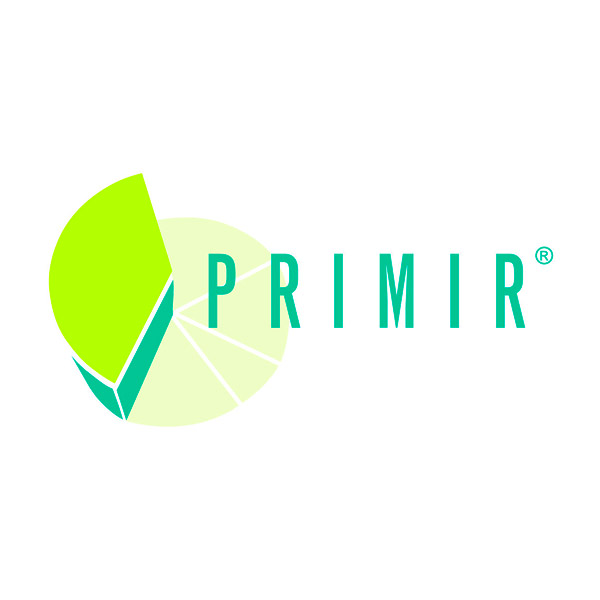
Strategic decisions must be supported by new technologies
To keep growing and staying competitive, companies need to invest in new markets. This is the driving force behind their strategy.
New emerging technologies are enabling them to minimize the risks when choosing activities that will generate the most value, while continuing to optimize use of their resources. These strategic decisions are taken within a system that is constantly evolving and adapting. External factors such as the volatility of raw materials, currencies or interest rates must also be taken into account.

Here we are talking about a top-down approach to investments, supplemented with abundant bottom-up field data in complex environments.
However, thanks to the digital revolution, the evolution of data technologies has radically transformed the information that can be collected from B to C market data.
Today, these technologies are bringing clear operational benefits to decision-makers. It is now possible for an information management system to integrate a scanning engine that can analyze a complex range of data, covering a wide spectrum of areas, in real time. Simultaneously being able to take into account an increasing number of variables makes it possible to create new products, new services, improve the decision-making process or even render it fully automatic in some instances.
Although integrating these emerging technologies is central to corporate strategy,
to limit the risks, executive committees need to address several key questions. This is where the notion of the strategic navigation chart comes into play.
The strategic navigation chart
Let’s draw a parallel with a road map.
The company environment is the map, complete with roads, mountains, rivers, seas, frontiers, valleys, railroad, bridges…
Its decision-making process is to define the Point of Destination, different stages of the trip, means of transport, speed, passage in front of traffic control radars, and fuel required…
So, in this context, what does it mean to limit the risk of an investment decision?
Limiting the risk means:
- creating the most precise, accurate and up-to-date navigation chart possible in order to be able to navigate smoothly.
- stake out the route, to be able to locate your position regularly, while taking into account changing weather and traffic conditions
- use as little fuel as possible, even aim to optimise consumption in relation to speed
- constantly recalculate arrival time and associated uncertainty
In other words you need;
- as much information as possible to picture the current environment
- an effective forecast model
- constant reevaluation to adjust to changes
Today, we can digitize traditional road maps incorporating real-time travel optimisers to thus combine:
- the global objective
- detailed cartography
- operational models for decision-making
- continuously evolving traffic conditions
Using a similar approach, the Company can adopt a decision-making process that takes into account the complexity and risks of each scenario: the Strategic Map.
This Strategic Map enables the Company to find its ideal investment and development paths in new markets. This means determining the best opportunities for growth in a portfolio of Products and/or Services, profitably developing a new Product in new markets, having the best-informed vision of a value chain, and evaluating the relevance of R&D, acquisitions and industrial development.
How do you fuel strategic decision-making ?
To make a decision, you need to create a model of this Map using multiple information and data sources. D.M.F.A. is an acronym of the 4 main stages:
1) D. Describe the relevant activities to the Company and its external environment :
In order to define the strategic issues, first you need a formalized description of:
- the markets : applications, technologies, products, services
- the value chain where the company operates: customers, distributors, competitors, suppliers…
- internal organisation of the Company : business lines or sub-divisions, technologies, competencies, costs, subsidiaries, countries or regions where the company is present.
All this information is represented in models with dozens of dimensions.
2) M : Model
Strategic Modeling frequently uses ‘Representations’, which have become classics, such as SWOT, Porter’s Forces .… but it is also necessary to create ‘ Predictive’ models adapted to suit the context such as :
- « Time-based extrapolation models »
- Monte-Carlo and « Decision-making and uncertainty» type models
- Models with multiple criteria, models that are quite easy to use with little practice
The parameters are often a combination of criteria that are relatively simple to grasp: market shares, price positioning, growth levels, market size, presence of the company – or not – in this market, legal constraints, entry barriers, sales force effectiveness, brand image, commercial presence.… Once these parameters have been gathered, they are difficult to comprehend. Weighted against each other, they become a gigantic patchwork of information to process.
3) F. Fuel and update the Model
Fueling the Models with both field data and forecasts (eg : projection of GDP,…) is indispensable. Continous updating, in particular for the financial year, is essential.
4) A : Continuously Analyze the possible routes on the Map.
- The database comprising all the information and results is continuously being analyzed to enable decisions to be made and then adapted.
- Analysis is based off the latest available information, updated to accommodate internal and external developments, according to criteria and intervals to be determined.
Company Practices
Before defining the key success factors for Strategic Decision-making, let’s start by taking a look at the legacy practices of large Companies.
- 1) Either they delegate the Process to a Strategy Consulting Firm
- 2) Or they monitor the Process in-house
- 3) Or a combination of the two
For the majority of companies we work with, we can identify 3 trends:
- Creation of a single reference system for all Company operations. This reference system is piloted by a Corporate team (Business Plan Models, Annual Planning process, yearly Business Review,…)
- The reference system is managed by a global organization in cooperation with the businesses to feed information to the models.
- Use of standard tools that limit the level of accuracy and flexibility in modeling.
Today, thanks to our prolonged day-to-day observation of these practices, we can identify some of the key factors for success. Good practices include:
- 1) Maintaining a shared work reference system over time
- 2) Acquiring and maintaining detailed and often patchy information
- 3) Modeling a large volume of internal and external data
- 4) Producing time series forecasts and scenarios
- 5) Ensuring the integrity of data, calculation formulas and representations
- 6) Capitalizing on the data and hypotheses of the previous financial years
- 7) Ensuring the continuity of Strategic Plans and Business Plans year after year
- 8) Updating the Strategic Plans rather than recreating them
In reality, the great majority of companies have not sufficiently developed their Road Map : far from being virtualized, it retains the nostalgic charm of being ‘almost’ paper. Indeed, much of the time, IT investment priorities do not cover these topics.
So what is the solution? To combine proven methodology with Anaplan’s cloud-based forecast technology : demonstration
Let’s examine the case of one of our customers, a world leader in speciality chemicals. This Company developed a new generation of microparticles that enabled it to enter a new market: Cosmetics.
The customer’s strategic decision was first to get to know the countries, zones and applications to target in their competitive environment.
A microparticle is a tiny sphere with a diameter that is often less than 50 micrometres. The role of microparticles in cosmetics is diverse. They can, for example, fill microcracks in the skin and be used in facecreams. In this instance, 6 other competing technologies were investigated.
There are many cosmetics markets: facial care, lipstick, makeup, body care, haircare, hair colorants… with numerous applications in each of these markets. There are about 40 relevant applications for microparticles.
In order to be comprehensive, 7 countries were studied, representing 40% of global GDP: United States, Germany, United Kingdom, France, Japan and China.
Finally, it was necessary to draw the map showing 6 competing technologies*, with 40 applications*, in 7 countries. This meant studying over 1500 cases, with each case needing to associate the size of the market, its attractivity and the company’s winning assets.
Using legacy tools without Method, decisions are taken on the basis of rough estimates (eg: high and low scenarios, with 1 or 2 influencing factors).
Thanks to :
The proven Methodology of Daydream which builds the Strategic Map – and Anaplan’s technology — in-cloud planning and modeling — which permits ongoing real-time updates on this Map (illustration: Anaplan is able to calculate 13 billion data cells in real-time, so our customers possesses a Tool that allows them to create and follow a growth path!
About Anaplan ?
Anaplan is the specialist in cloud-based company planning. The company offers its customers a comprehensive service that includes planning and modeling architecture, an in-cloud collaborative environment and a user-friendly interface. Anaplan clients can choose from over 100 pre-built planning apps, available on Anaplan App Hub platform, or easily create their own customized apps.
In a world where you need to react faster and faster, where companies struggle to supply the right resources, to the right place, at the right moment, Anaplan enables leaders to successfully drive their activity in real time, thanks to its unique collaborative planning solution.
Anaplan is a privately held company with headquarters in San Franciso, CA, with global offices on four continents. To learn more, visit www.anaplan.com/fr. Follow Anaplan on Twitter: @anaplan.
About Daydream ?
Daydream is a Consulting firm specialized in B2B Market Strategy & New Business Development for industrial groups.
Our service offer is composed of 4 main pillars: detailed Market Analysis, New Business Development, defining market access strategies and generating business data.
Because Daydream covers a wide area of analysis : Europe , USA and Asia, with 3 offices (Cologne, Philadelphia, Shanghai), industrial groups benefit from a relevant and global perspective on their market.
The result is a proven Methodology from 300+ projects, in 16 years for over 70 major accounts.
Daydream has integrated this methodology in APSS ANAPLAN to go beyond the limits of legacy tools, the limits of spreadsheet analysis, flexibility( ?) and cost of modifications of datawarehouse enterprises.
Contacts :
Anaplan :
Norbert Gruere
norbert.gruere@anaplan.com
DayDream :
Christophe Ballihaut
christophe.ballihaut@www.daydream.eu
Jean-Louis Cougoul
jean-louis.cougoul@www.daydream.eu








